Log in or create new account to save this product to your wishlist.

Orchids: A Complete Guide on How to Care for Them
Want to give your orchid the best possible care? Discover essential tips from placement to watering and pruning. Learn everything you need to know!
🌱 All important maintenance moments for your lawn during the year. Leave your email and we will send you the lawn calendar for free.
Enter your email
Receive the lawn calendar in the mail
Enjoy a green lawn all year round!

- Order by 2PM = shipped today
- 250.000+ satisfied customers!
- 60 day satisfaction guarantee
Do you have a stunning orchid at home and wonder how to care for it properly? While they may look exclusive, orchids are surprisingly easy to maintain when you understand the right techniques.
- Orchid characteristics profile
- Species of orchids
- Orchid flowers and colours
- Where do orchids originate from?
- How long does an orchid typically bloom?
- The basics of orchid plant care
- Repotting orchids step by step
- Common orchid problems
- Orchid hibernation: fact or fiction?
- FAQ about orchids
- Get the orchid care started!
In this comprehensive guide, you’ll discover everything you need to know about caring for your orchid – the ideal positioning, the dos and don’ts of watering, repotting and solving common problems. Are you ready to help your orchid thrive? Let’s begin!
Orchid characteristics profile
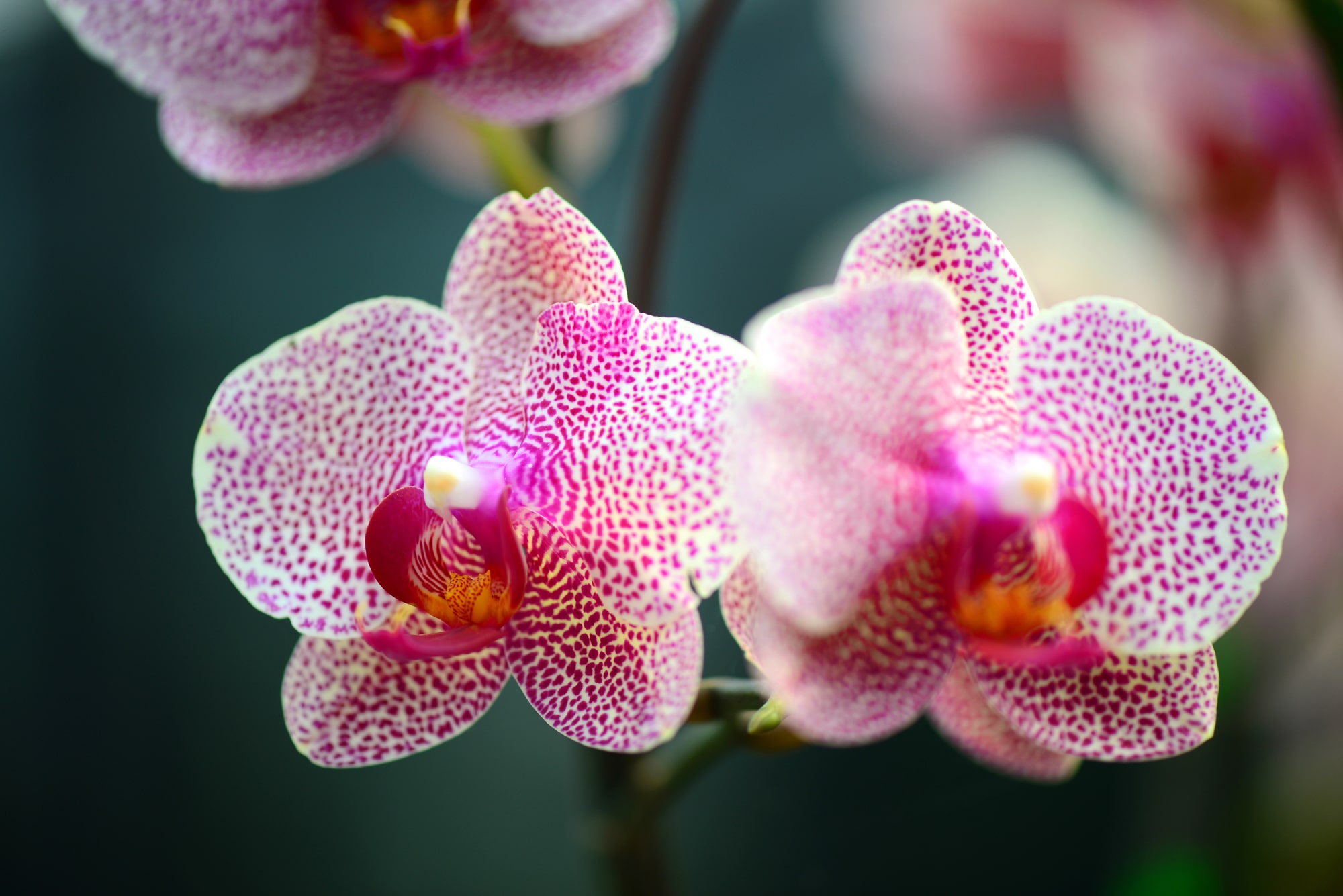
-
Light: Abundant light, but avoid direct sunlight
-
Water: Minimal, prefers moist potting soil
-
Flowers: Wide variety of colours, blooming period and colour varies by species. Can flower for several months
-
Humidity: High humidity levels. Moderate air-purifying qualities
Species of orchids
There are an astounding 25,000 different species of orchids, that we know of. This magnificent plant forms the largest plant family in the world and can be found almost everywhere. The phalaenopsis, also known as the moth orchid, is the most widespread variety.
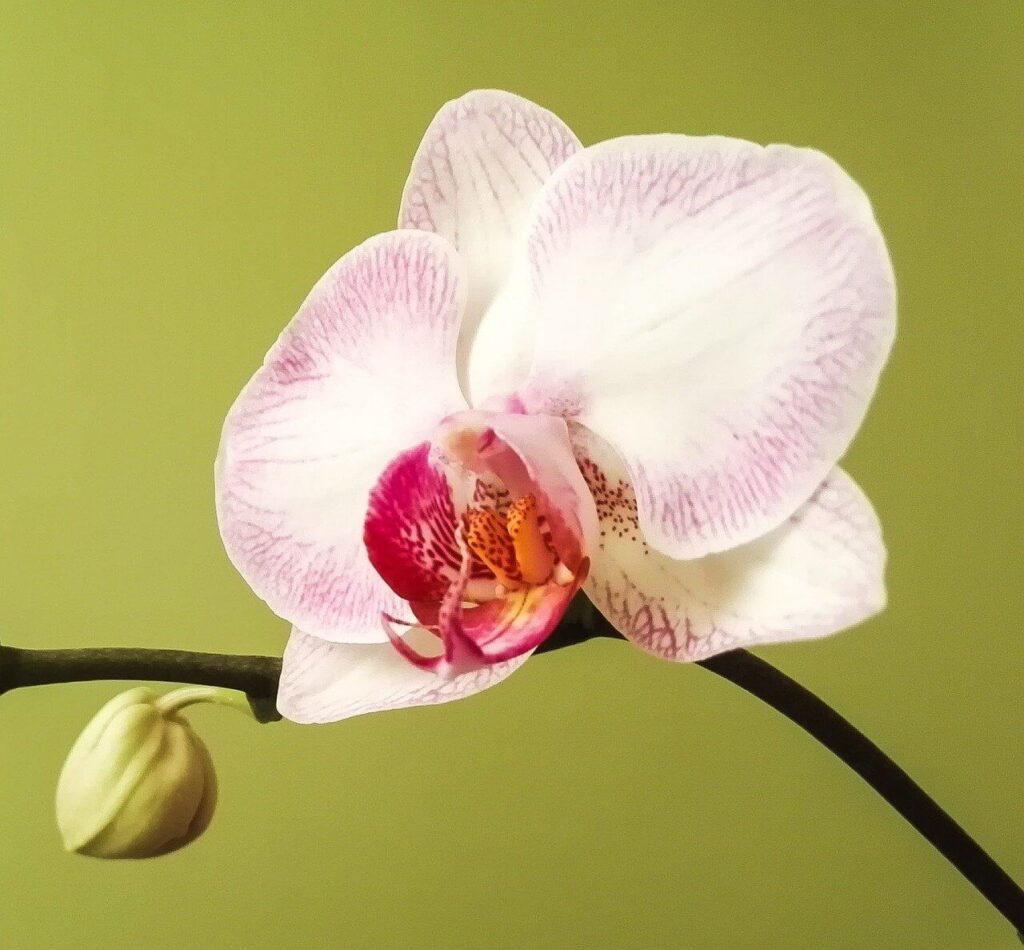
You can instantly recognise this houseplant by its distinctive orchid flower, consisting of three sepals and three petals. In nature, this plant primarily grows on trees, in rock crevices or in well-aerated soil such as humus.
What makes this plant so special? The moth orchid can bloom up to three times a year, with a flowering period lasting between 2 and 6 months! Moreover, the plant thrives best at temperatures between 18 and 24 degrees Celsius, making it perfect for the average living room.
Other popular orchid varieties include: the lady’s slipper, the violet orchid, the brassia and the cattleya.
Orchid flowers and colours
When it comes to colours, this beauty offers endless possibilities! Phalaenopsis can be found in white, yellow, pink and purple, often featuring stunning patterns. Dendrobium compact varieties come in white, blue and pink, while phalaenopsis hybrids showcase a vast spectrum: white, pink, purple, blue, red, yellow, green, brown and cream.
Where do orchids originate from?
The orchid family (orchidaceae) is among the largest plant families on Earth. There are an impressive 25,000 to 30,000 different species known, and new varieties continue to be discovered.
The most common orchid in Britain, the phalaenopsis, originates from Southeast Asia, the Philippines and Australia. In 1825, Dutch botanist Dr C.L. Blume first documented this species.
How long does an orchid typically bloom?
The flowering duration varies significantly between orchid species. Most orchids bloom just once yearly for 6 to 10 weeks. The butterfly orchid stands out as a remarkable exception.
With proper care, it can flower for 2 to 6 months and bloom 2 to 3 times annually. This makes this orchid an ideal houseplant, providing long-lasting colour indoors. For comparison, other popular orchid species have these average flowering periods:
- Dendrobium: 6 to 8 weeks
- Cattleya: 2 to 3 weeks
- Cymbidium: 8 to 10 weeks
- Miltonia (pansy orchid): 2 to 4 weeks
- Oncidium (tiger orchid): 5 to 8 weeks
- Vanda: 4 to 6 weeks
The basics of orchid plant care
Proper daily care makes the difference between a withering and a thriving orchid. By paying attention to a few simple things, you can keep your plant in prime condition for a very long time. On average, orchids live between 15 and 20 years.
These care tips apply generally. When purchasing special varieties, it’s wise to check the instructions on the packaging for specific guidance.
Where to place orchids
A suitable location is vital for your orchid’s health. This tropical beauty loves abundant light, but direct sunlight can dehydrate and scorch the leaves. An east-facing windowsill is perfect, as the plant receives morning light and remains in shade during later hours.
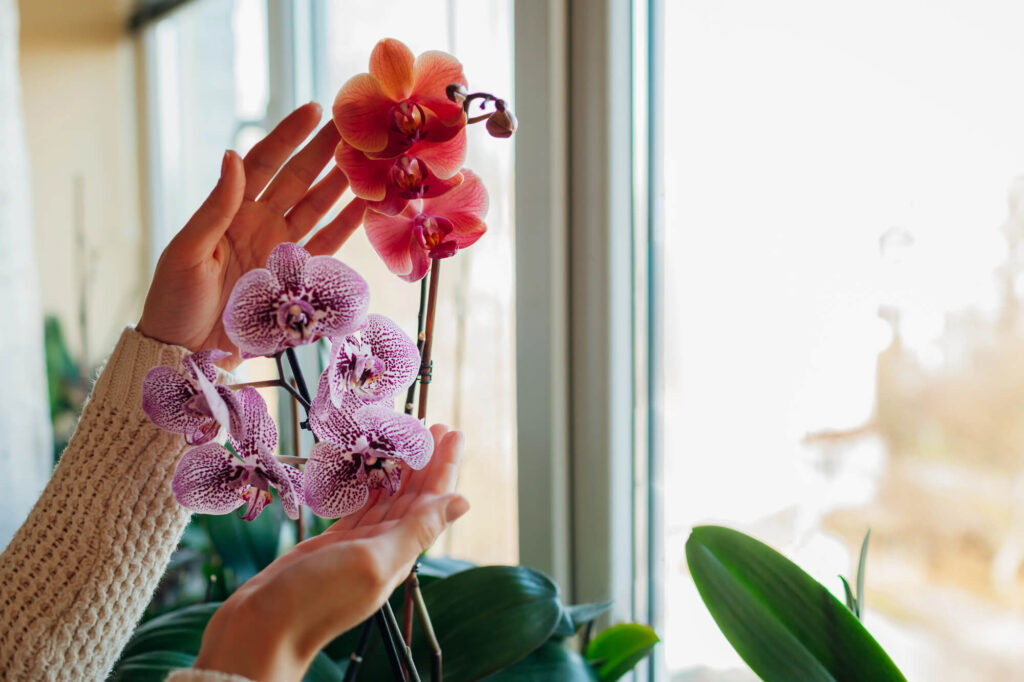
Suitable spots for your orchid include:
- A windowsill facing east, west, northwest or northeast
- A table several metres from the window
- A position in the middle of the room with sufficient daylight
- A bathroom with natural light (due to higher humidity)
However, avoid dark spaces like bedrooms with drawn curtains. Additionally, don’t place your orchid near radiators or in draughty areas, as this can damage the plant. Keep the plant away from ripening fruit, as the ethylene gas released by fruit accelerates the orchid’s ageing process.
How often, and how, should you water?
How often you need to water your orchid varies by season. Mostly, this houseplant prefers slightly moist potting soil. In summer, your orchid needs water approximately once a week, whilst in winter, once every ten days are typically sufficient.
When possible, check your plant’s roots: grey roots indicate it’s time to water, while green roots suggest there’s still adequate moisture present. Older roots may stay grey, so look for the younger ones as indicators.
Orchids prefer soft, lukewarm water. Rainwater or condensation from the tumble dryer is ideal because unlike tap water, it’s free from lime and minerals.
Humidity and temperature
Orchids thrive best at temperatures between 16 and 24 °C, which matches perfectly average room temperature. At night, the temperature should not drop too much, maintain a minimum of 14 °C.
Most orchids originally come from humid, tropical regions where humidity levels hover around 70%, while in an average living room it often drops below 40%. To increase humidity, you can:
- Place a small container of water next to the plant
- Group several plants together
- Lightly mist the leaves with demineralised water (avoid the flowers)
- Use a humidifier
By following these simple care tips, your orchid can bloom for years.
Feeding, pruning, and repotting orchids
Beyond basic care, this beautiful houseplant needs some extra attention to thrive optimally.
Feeding in spring and summer
For abundant blooming, your orchid requires additional nutrients during the growing season. Only feed your plant in spring and summer. In autumn and winter, the plant is dormant, making feeding potentially harmful. If you’ve just purchased an orchid, it doesn’t need extra feeding for the first two months: the fresh potting soil contains sufficient nutrients (for the immediate future).
Always use special orchid feed and follow the recommended dosage on the packaging. Overdosing can damage the roots. A good guideline is to fertilise the plant approximately twice per month during the growing season. This provides your orchid with sufficient energy, preventing orchid leaves from wilting and helping flowers stay beautiful longer.
Pruning orchids for new blooms
After flowering, pruning is essential to encourage your orchid to bloom again. Locate the third eye on the flower stem – a small node from which a new shoot can grow. Cut just above this eye with clean, sharp scissors. New flowers will emerge from this shoot.
If the stem is completely brown or withered, cut it off entirely at the base. For single-stemmed orchids, prune once the flowers have faded. For multi-stemmed varieties, cut above the second or third eye.
Don’t cut aerial roots
Those thick roots growing out of the pot? They’re aerial roots, and they’re more important than you might think. They absorb water and nutrients while providing extra support for your plant.
Our advice: leave them be. They’re part of the natural growth pattern of orchids. Only remove them when they are:
- Damaged, rotten or diseased (brown, mushy or black)
- Growing so large they become unsightly
- Interfering with repotting
Always use clean tools here as well to prevent problems.
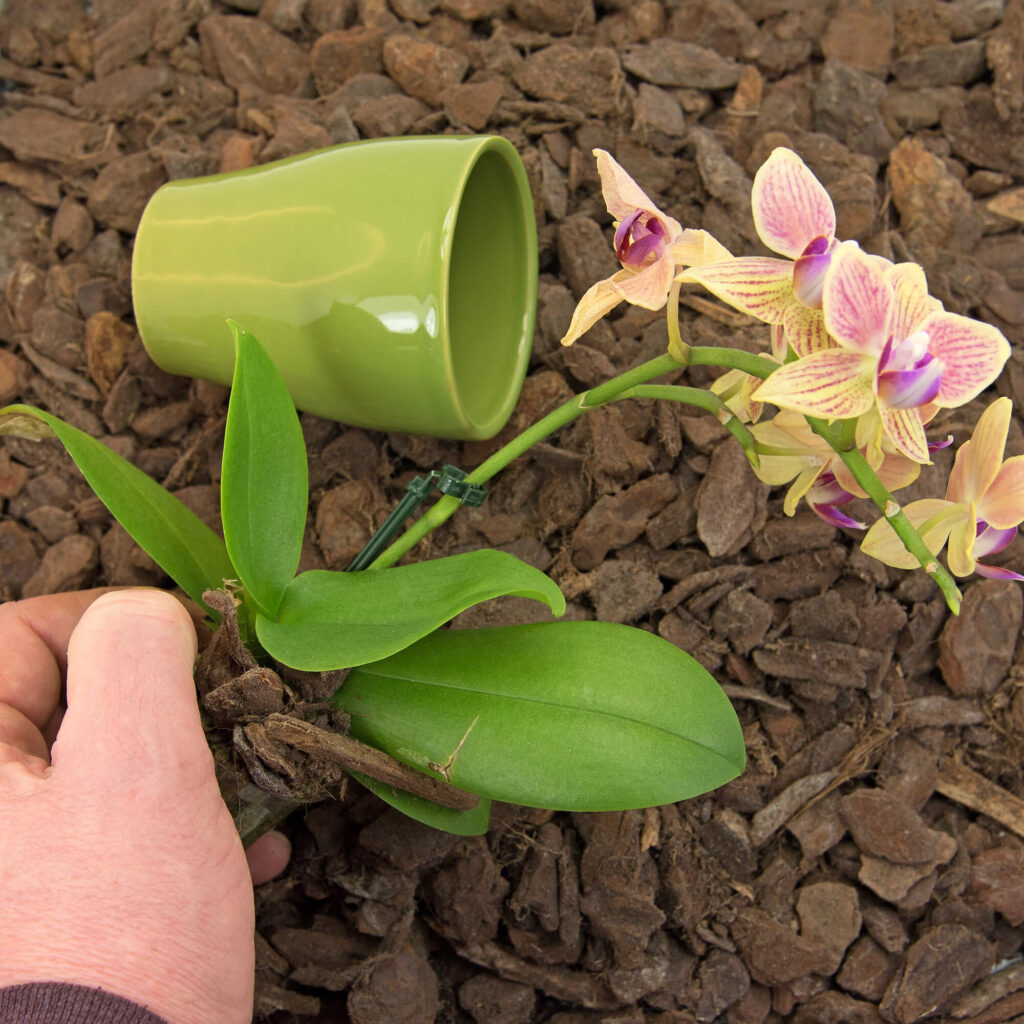
Repotting orchids step by step
Repot your orchid every 2 to 3 years, or when the roots grow out of the pot. The best time for this is spring when the plant can recover better. Follow these steps:
- Preparation
Gather a new (transparent) pot approximately 20% larger than the current one, special orchid bark mix (potting mix with bark) and clean scissors.
- Remove plant from pot
Gently pull at the base while supporting the pot. If needed, tap the pot lightly.
- Inspect roots
Remove old potting mix and trim away dead or rotted roots. Healthy roots are green or white and feel firm.
- Prepare a new pot
Fill the bottom with orchid bark to about halfway.
- Position orchid
Place the plant in the centre and spread the roots evenly.
- Finishing
Fill the remaining pot space with bark and press down gently.
- Watering
Ommediately after repotting, submerge the plant in water and allow to drain well.
Want additional information? Read our complete guide on repotting plants here.
Common orchid problems
Even experienced growers sometimes face challenges with their orchids. Fortunately, most problems can be solved when you know what to look for.
Orchid care for drooping leaves
Droopy leaves are a clear signal that something is wrong with your orchid. Usually, the cause lies in water management. First, check the roots of your plant. Green roots indicate your orchid is getting sufficient water, while grey or greyish roots suggest the plant is too dry. Brown roots, however, indicate overwatering.
If the leaves are droopy and the roots are brown, immediately reduce watering. Remove any rotted roots and replant the aerial roots. If the roots are grey and the leaves are limp, submerge the orchid in lukewarm water, so the roots can absorb moisture again. Does your orchid have yellow leaves? This is often a sign of too much sunlight or a location that’s too cold.
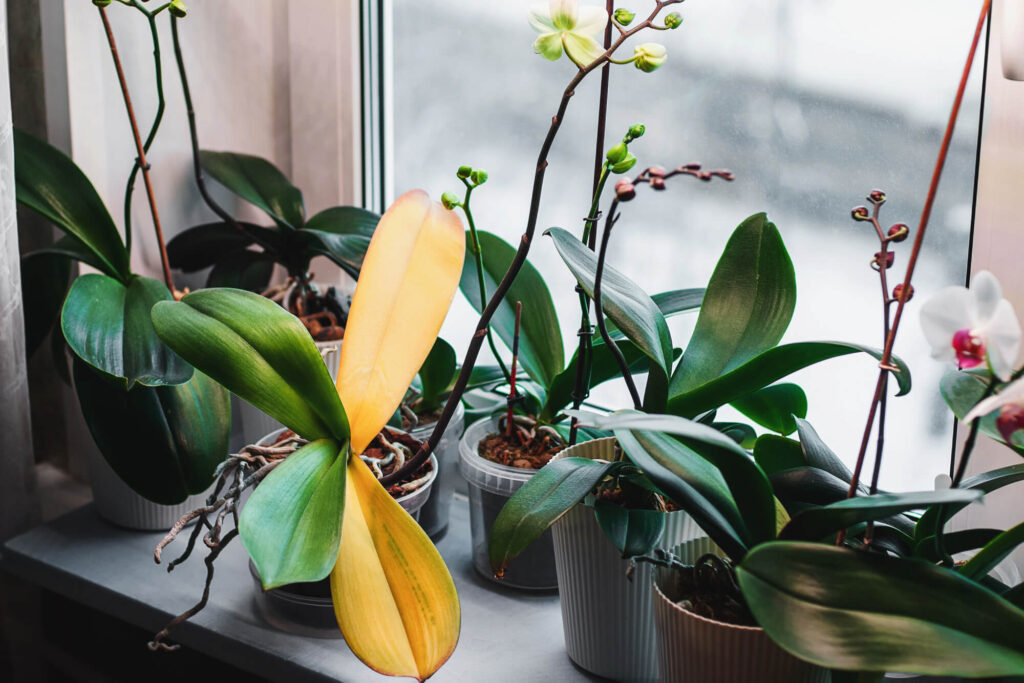
What to do about bud drop?
An orchid dropping its buds is frustrating, yet occurs frequently. This issue primarily stems from three factors: low temperatures, incorrect watering (often overwatering) or insufficient light. When temperatures fall below 15 °C, the roots become inactive, causing the plant to shed its buds.
Additionally, sudden temperature fluctuations, draughts, cigarette smoke or ethylene gas from ripening fruit can contribute to bud loss. Therefore, keep your orchid away from fruit bowls and ensure a stable environment with temperatures between 16 and 32 degrees.
Tips to prevent bud drop:
- Water regularly, but allow the soil to dry between watering sessions
- Provide the plant with sufficient indirect sunlight
- Protect against temperature fluctuations
- Maintain proper humidity levels
Orchid pests
Orchids are sometimes susceptible to pests. Mealybugs are particularly common. These small, white insects can damage your plant. To keep these unwanted visitors at bay, it’s crucial to maintain proper humidity levels. Regular misting can also help deter mealybugs.
Orchid hibernation: fact or fiction?
There’s a common misconception that orchids need to hibernate, but this isn’t really the case. Unlike some other plants, tropical orchids don’t truly hibernate. What does happen: during winter, the plant’s metabolism slows due to reduced light and lower temperatures.
If your orchid loses its flowers in winter and doesn’t form new buds, this is a natural response to changing conditions. The key advice is to leave the plant alone. Particularly, avoid giving extra water or fertiliser to ‘wake it up’ from this ‘hibernation’ – this could actually harm the plant.
How to help your orchid through winter:
- Position the plant on a bright windowsill
- Water sparingly (only every 3 to 4 weeks)
- Stop fertilising
- Keep temperature above 14 °C
With patience, your orchid will produce new buds and beautiful flowers in spring.
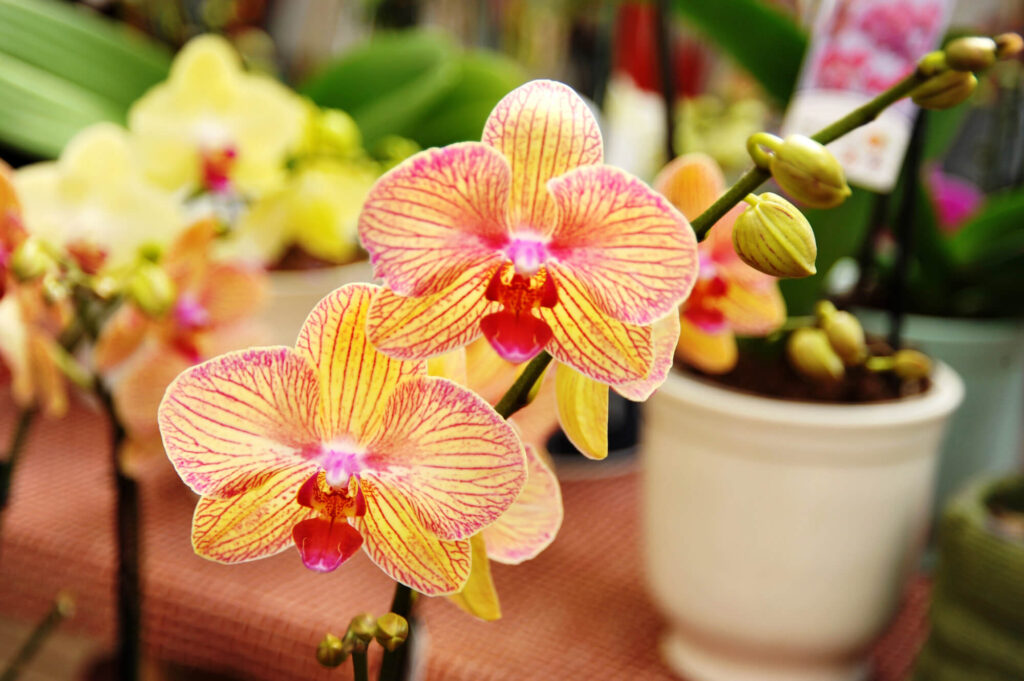
FAQ about orchids
The watering frequency varies by season. In summer, an orchid needs water approximately once a week, whilst in winter, once every ten days are typically sufficient. The best watering method is through placing your orchid in water and giving it a soaking bath.
The ideal spot for an orchid is a bright location without direct sunlight. An east-facing windowsill is perfect, as the plant receives morning light and remains in shade later in the day. Avoid dark spots, heating sources and draughty locations.
This depends on the variety. With proper care, the popular moth orchid can flower for 2 to 6 months and may bloom 2 to 3 times per year. This is considerably longer than many other orchid species, which typically flower for only 6 to 10 weeks.
Get the orchid care started!
Caring for an orchid is actually quite manageable. When you understand and apply the basic principles, your orchid can be a stunning focal point in your home for years. By consistently following these care tips, your orchid will reward you with beautiful flowers that can bloom for up to 6 months. Are you interested in learning more about indoor gardening? Take a look at our ultimate guide to indoor gardening, and our guide on choosing plant substrates.
Do you have an essential tip for orchid care or a question? Please let us know in a comment below. Thank you and …
Happy gardening!
-
Growing Wisteria Made Simple: From Planting to Perfect BloomsWith blossoms like a purple waterfall, Wisteria sets an almost magical and colourful mood. If you want to grow this beauty in your garden, you’ll need a bit of patience. Don’t worry, it will most definitely pay off.Read more
-
How to Build a DIY Greenhouse: A Practical Guide for Smart SpendersImagine extending your growing season throughout the year, nurturing tender plants regardless of the weather, and creating a personal garden sanctuary. This is precisely what a DIY greenhouse offers you. Let’s learn how to build one.Read more
-
How to Grow Eucalyptus in British GardensWith a little love and care, eucalyptus trees can thrive in English gardens. Since they don’t germinate well without proper help, there are not considered invasive. So, there is no reason not to plant them if you enjoy their looks.Read more
-
Transform Your Garden with All-Year-Round Flowering PlantsDid you know you can enjoy blooming flowers even in January? With the right selection of all year round plants, there’s no need to wait until spring to add some colour to your garden.Read more
-
How to Create a Butterfly Garden: A Simple Guide for British GardensThe UK's butterfly population includes 59 different species. These beautiful winged creatures face a steady decline because of habitat loss, pollution and changing weather patterns. Your garden can become a vital link between nature reserves and natural habitats. Let’s explore how.Read more
-
Volcanic Rock Dust for Your Garden—Application and TipsDid you know that volcanic rock dust is a brilliant organic soil improver? This article explains exactly what it's good for and how to use it properly.Read more
-
How to Use Landscape Fabric ProperlyIf weeds or erosion in your garden are troubling you, landscape fabric might be the solution. We’ll explain how and when to use it properly, just keep on reading.Read more
-
Hostas: A Complete Care GuideIf you have a north-facing garden or some shady corners on your property, hostas are the plants for you. These green delights thrive particularly well in partial to full shade and require consistently moist soil to perform at their best.Read more
Leave a comment
Your answer will be displayed on the site and the interested party will be notified by email.
Leave a comment
Have a question or want to share your experience? Leave us a comment.
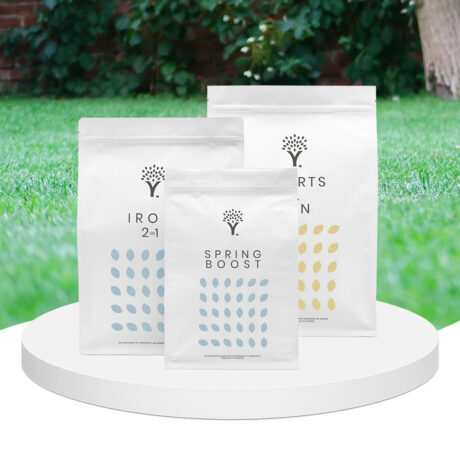
- Order by 2PM = shipped today
- 250.000+ satisfied customers!
- 60 day satisfaction guarantee
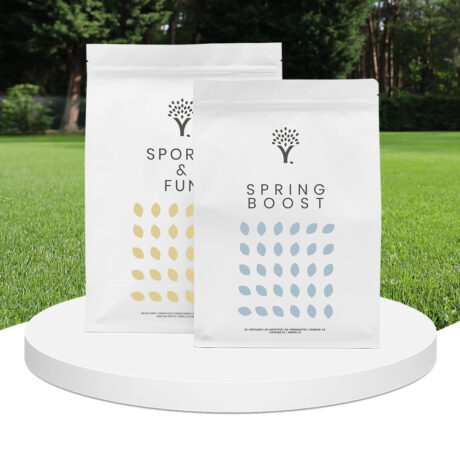
- Order by 2PM = shipped today
- 250.000+ satisfied customers!
- 60 day satisfaction guarantee

🌱 All important maintenance moments for your lawn during the year. Leave your email and we will send you the lawn calendar for free.
Enter your email
Receive the lawn calendar in the mail
Enjoy a green lawn all year round!


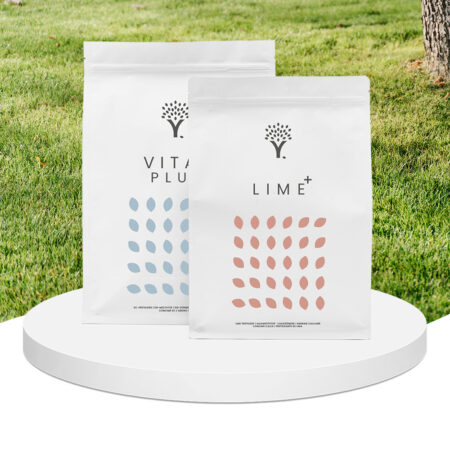


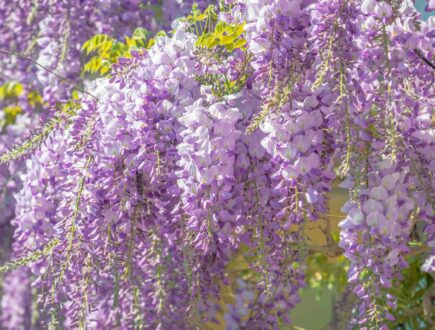


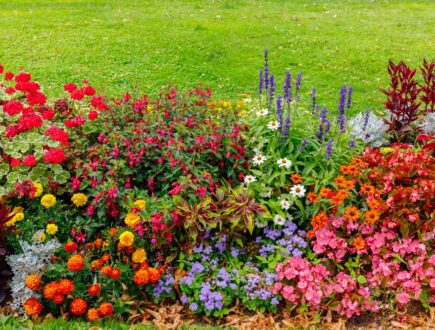


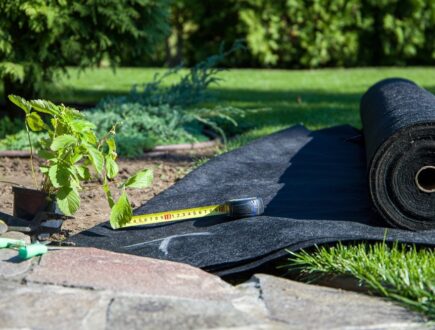
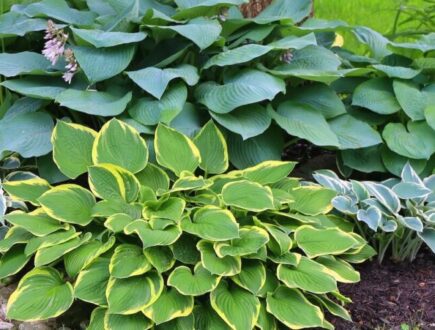
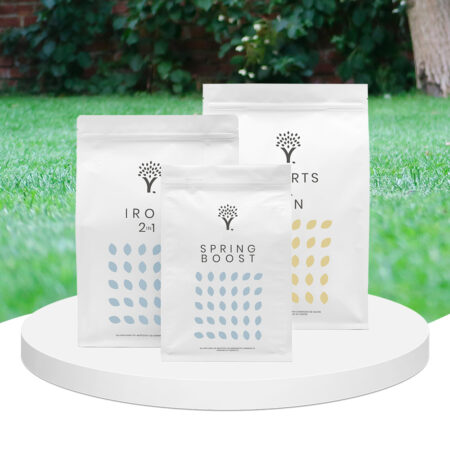
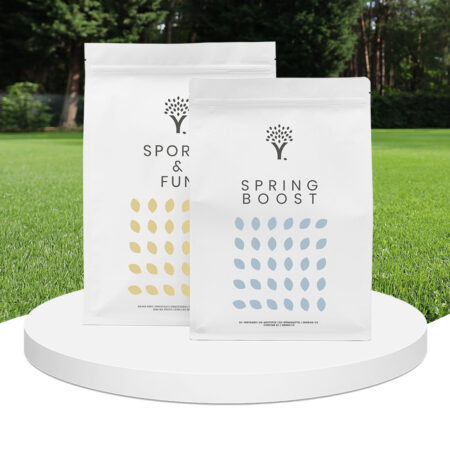
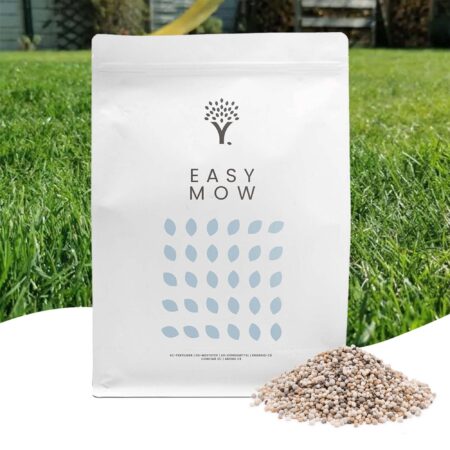
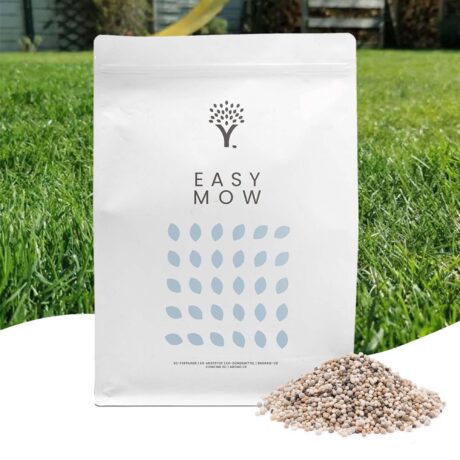

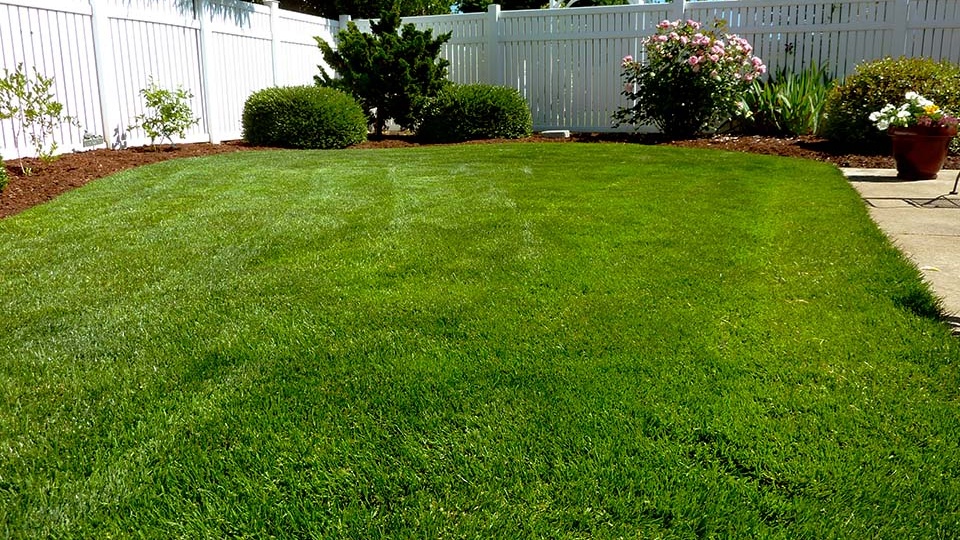
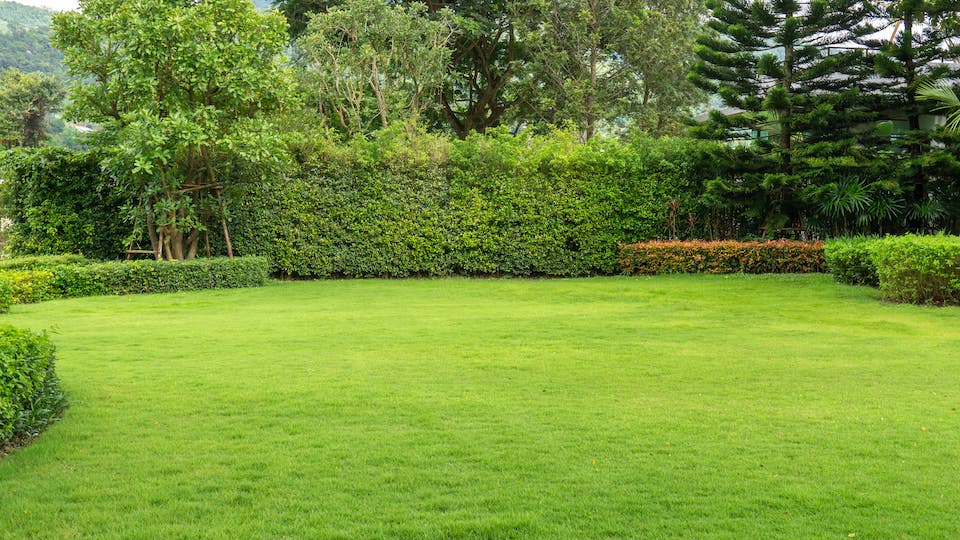
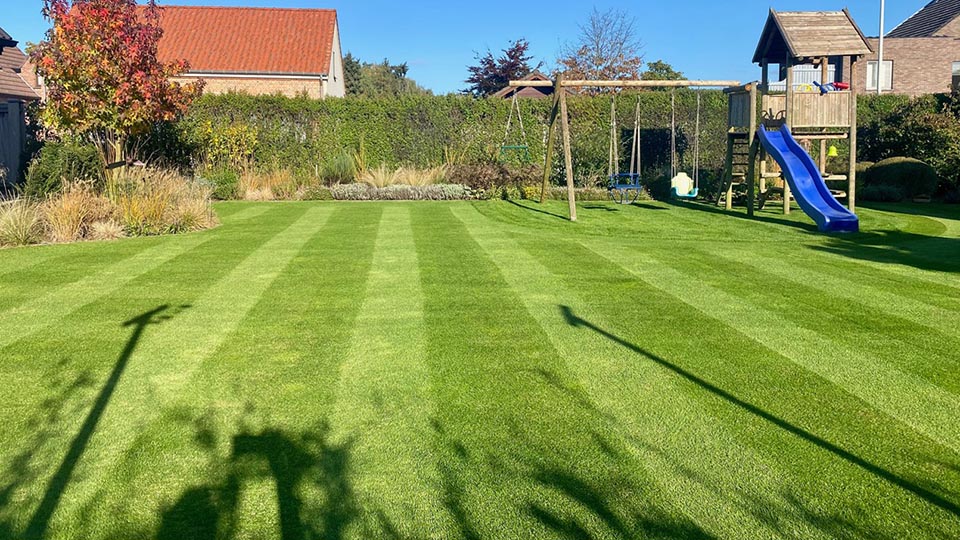

Comments (0)
There are no comments yet. Well then, what are you waiting for to
Be the first to write your comment!inaugurate this pretty page?
Do you have some comments?